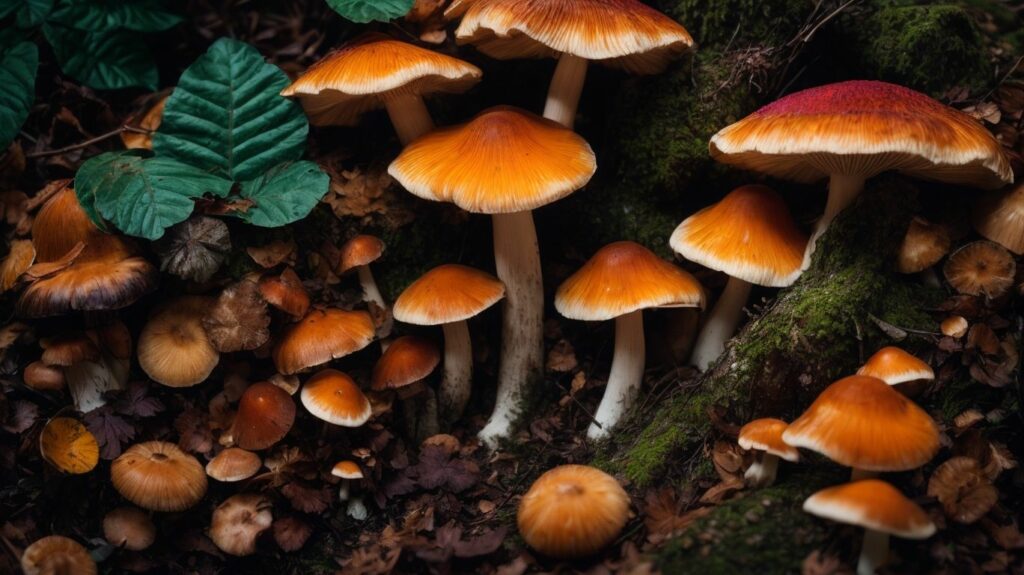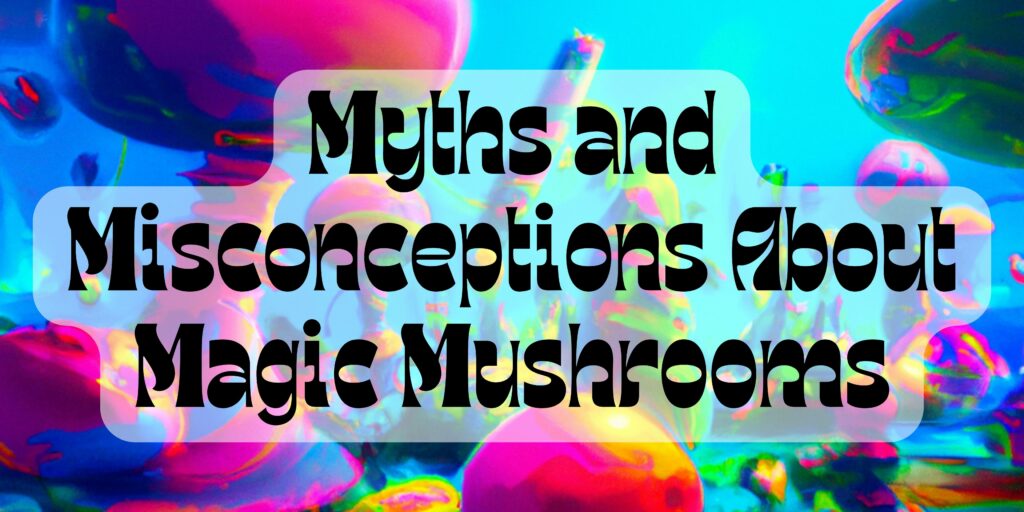Are you curious about the effects and potential addiction of psychedelic mushrooms, commonly known as “shrooms”? This article explores the concerns and dangers of using shrooms, and how it can impact your life. Discover the truth behind the mushroom craze and make an informed decision for yourself.
What Are Shrooms?
Shrooms, also known as magic mushrooms, are a type of fungus that contains the psychoactive compound psilocybin. They have been used for centuries for their hallucinogenic effects and for spiritual or recreational purposes. Shrooms can have varying appearances, but they generally have a distinct cap and stem. When ingested, psilocybin is converted into psilocin, which interacts with serotonin receptors in the brain, resulting in altered perception, changes in mood, and hallucinations. It is important to note that the effects of shrooms can differ greatly based on the dosage, individual tolerance, and set and setting. If considering trying shrooms, it is crucial to thoroughly research and understand the potential risks and effects, and to approach their use with caution in order to ensure a safe and positive experience.
How Do Shrooms Work in the Brain?
Magic mushrooms, also known as shrooms, contain a psychoactive compound called psilocybin that affects the brain in several ways. Here is a list of steps explaining how shrooms work in the brain:
- Consumption: When ingested, psilocybin is broken down into psilocin.
- Neurotransmitter receptors: Psilocin binds to serotonin receptors in the brain.
- Increased serotonin activity: This binding leads to an increase in serotonin activity, particularly in the prefrontal cortex.
- Altered perception: The increased serotonin activity affects various brain regions, resulting in altered perception, sensory experiences, and changes in mood and emotions.
- Connections between brain regions: Psilocin disrupts the default mode network, leading to a breakdown in communication between different brain regions.
- Increased neural plasticity: The disruption of the default mode network allows for increased neural plasticity, potentially leading to new insights and perspectives.
Understanding how shrooms work in the brain can provide insights into their potential therapeutic uses and the risks associated with their recreational use.
Are Shrooms Addictive?
Magic mushrooms, commonly known as “shrooms,” contain the psychoactive compound psilocybin, which can induce intense hallucinogenic experiences. However, research suggests that shrooms are not physically addictive. Unlike substances such as opioids or nicotine, shrooms do not create chemical dependencies in the brain. However, individuals may develop a psychological dependence on the hallucinogenic effects. It is important to note that recreational use of shrooms carries risks, including unpredictable reactions and potential mental health concerns. As with any substance, responsible and informed use is crucial.
Similarly, a significant historical event related to shrooms is the discovery of psilocybin mushrooms by the Mazatec people in Mexico centuries ago. They utilized these mushrooms for spiritual and medicinal purposes, believing they possessed the ability to connect with the divine and bring about healing and enlightenment. This historical use highlights the cultural significance and enduring relationship with psychedelic mushrooms.
What Is the Definition of Addiction?
Addiction can be described as a compulsive urge for a substance or activity, often accompanied by withdrawal symptoms when the behavior is ceased. While shrooms are not typically considered addictive, some individuals may develop a psychological dependence on their effects. This means that they may feel compelled to use shrooms regularly to achieve a desired psychological or emotional experience. However, physical dependence and withdrawal symptoms are less common with shrooms compared to substances such as opioids or alcohol. It is important to note that addiction is a complex topic and each person’s experience may vary.
The definition of addiction has evolved over time. In the early 20th century, addiction was primarily associated with substances such as alcohol and opioids. However, our understanding of addiction has expanded to include behaviors like gambling and excessive internet use. Today, addiction is recognized as a medical condition characterized by a compulsive need for a substance or activity, despite negative consequences. Ongoing research seeks to understand the multifaceted factors involved in addiction, including genetic, environmental, and psychological influences, in order to improve prevention and treatment methods.
Can Someone Physically Depend on Shrooms?
No, it is not possible for someone to become physically dependent on shrooms. Psilocybin mushrooms, also known as shrooms, do not create a physical dependence in users. The compound psilocybin affects serotonin receptors in the brain, causing hallucinogenic effects. These effects are primarily psychological and do not lead to physical addiction. While repeated use of shrooms can result in a tolerance, this is not indicative of physical dependence.
It is important to use shrooms responsibly and with caution, as they can still pose potential risks and negative psychological effects.
With shrooms, tolerance doesn’t mean you’re becoming more tolerant, it means you’ll need more for the same effect. Kind of like your ex constantly needing more attention.
Can Someone Develop a Tolerance to Shrooms?
Yes, it is possible for someone to develop a tolerance to shrooms. When mushrooms are consumed, they interact with receptors in the brain, leading to altered perception and hallucinations. With regular use, the brain can adapt and become less responsive to the effects of the drug. This means that higher doses are needed to achieve the same level of hallucinogenic effects. However, it is important to note that tolerance to shrooms can vary among individuals.
Developing a tolerance to shrooms can increase the risk of taking larger doses, which may lead to more intense psychedelic experiences.
Fact: Tolerance to shrooms can develop rapidly, often within a few days of repeated use.
Can Someone Experience Withdrawal Symptoms from Shrooms?
Withdrawal symptoms from shrooms are typically mild and short-lived, and while they are not physically addictive, some users may develop psychological dependence. These symptoms may include irritability, mood swings, fatigue, and difficulty sleeping, and typically only last for a few days to a week. It is important to keep in mind that individual experiences may vary. Seeking support from a healthcare professional or a substance abuse counselor is recommended for anyone experiencing withdrawal symptoms or struggling with shroom use.
Remember, using shrooms safely and responsibly is crucial to minimize potential risks and enhance overall well-being. Just like a bad trip, using shrooms without caution can lead to some nasty side effects that are not exactly what the doctor ordered.
What Are the Potential Risks of Using Shrooms?
While the use of shrooms, or psilocybin mushrooms, may offer a range of potential benefits, it is important to also consider the potential risks. In this section, we will delve into the potential negative psychological effects of shroom use, as well as the risks of accidental poisoning and potential for harmful behavior. Additionally, we will discuss the potential interactions between shrooms and other substances that may further increase risk factors. It is important to have a full understanding of these potential risks before considering the use of shrooms.
1. Negative Psychological Effects
Negative psychological effects are a potential risk when using shrooms. To minimize these risks and ensure a safer experience, consider the following steps:
- Set and setting: Choose a comfortable and familiar environment free from distractions.
- Mindset: Approach the experience with a positive and open mindset.
- Start with a low dose: Begin with a small dose to gauge your sensitivity and response.
- Have a trip sitter: Have a sober and trusted friend present to provide support and assistance if needed.
- Stay hydrated: Drink water throughout the experience to stay hydrated.
Pro-tip: It’s important to maintain a positive mindset and create a safe environment when using shrooms to minimize the risk of negative psychological effects.
2. Accidental Poisoning
Accidental poisoning is a potential risk when using shrooms. To prevent this, it is important to take certain precautions:
- Ensure you are obtaining shrooms from a trusted and reliable source.
- Identify the species correctly to avoid consuming toxic varieties and risk accidental poisoning.
- Start with a small dose to gauge your sensitivity and reaction to avoid any potential accidental poisoning.
- Have a sober and trusted trip sitter present who can assist in case of an emergency, including accidental poisoning.
- Keep emergency contact information readily available in case of accidental poisoning or any other emergency.
By following these steps, you can minimize the risk of accidental poisoning and have a safer experience with shrooms. Remember to prioritize your safety and well-being at all times.
Shrooms may make you see unicorns, but they won’t magically make you a responsible and safe user.
3. Potential for Harmful Behavior
When using shrooms, there is a potential for harmful behavior, so it is important to take precautions to ensure a safe and responsible experience:
- Educate yourself about shrooms, including the effects, risks, and proper dosage.
- Start with a small dose to gauge your reaction and sensitivity to the substance.
- Have a sober and trusted trip sitter present to provide support and guidance during the experience.
- Avoid mixing shrooms with other substances, as this can increase the risk of negative interactions and unpredictable effects.
Mixing shrooms with other substances is like playing a game of Russian roulette, but instead of bullets, it’s potential drug interactions waiting to happen.
4. Interactions with Other Substances
When using shrooms, it is crucial to carefully consider potential interactions with other substances. Mixing shrooms with certain substances can have unpredictable and potentially dangerous effects. For instance, combining shrooms with alcohol or other hallucinogens can intensify the effects and increase the risk of adverse reactions. It is also recommended to avoid consuming shrooms while taking medications that may negatively interact with them, such as antidepressants or antipsychotics. If you have any concerns about potential interactions, it is best to consult with a healthcare professional prior to using shrooms.
A study published in the Journal of Psychopharmacology in 2012 examined the potential interactions of shrooms with other substances. The research revealed that combining shrooms with substances like LSD or MDMA could result in amplified psychedelic effects, increasing the risk of experiencing hallucinations and altered states of consciousness. These findings highlight the importance of understanding and being cautious of the potential risks associated with mixing shrooms with other substances. Always prioritize safety and informed decision-making when using shrooms or any other psychoactive substances.
How Can Someone Use Shrooms Safely and Responsibly?
While some may argue that shrooms can be addictive, the truth is that they can be used safely and responsibly. In this section, we will discuss four important tips for using shrooms in a safe and responsible manner. First, we’ll dive into the importance of educating yourself about shrooms and their effects. Then, we’ll cover the benefits of starting with a small dose and gradually increasing it. Next, we’ll stress the importance of having a sober and trusted trip sitter present during your shroom experience. Lastly, we’ll explore the potential dangers of mixing shrooms with other substances and why it’s best to avoid doing so.
1. Educate Yourself About Shrooms
Educating yourself about shrooms is crucial before considering their use.
- Research: Learn about the different types of mushrooms, their effects, and potential risks.
- Legality: Understand the legal status of shrooms in your area to avoid legal consequences.
- Source: Ensure you obtain mushrooms from a reputable and trusted source.
- Dosage: Familiarize yourself with recommended dosages and start with a low dose to gauge your reaction.
- Effects: Educate yourself on the potential physical, psychological, and emotional effects of shrooms.
- Set and Setting: Create a safe and comfortable environment for your experience.
- Trip Sitter: Have a sober and trusted person present to provide support and ensure your safety.
- Mindset: Approach the experience with a positive and open mindset.
- Integration: Reflect on your experience and integrate any insights gained into your daily life.
2. Start with a Small Dose
Starting with a small dose is crucial when using shrooms to minimize the risks and potential negative effects. Here are some steps to follow:
- Research: Understand the potency and effects of different strains and species of mushrooms.
- Measure Properly: Use a milligram scale to accurately measure the dosage.
- Start with a Small Dose: Begin with a small dosage, typically around 1 gram, to assess your tolerance and sensitivity.
- Wait and Assess: Allow enough time for the effects to fully kick in before deciding to take more.
- Gradually Increase: If you feel comfortable, you can gradually increase the dosage in subsequent experiences.
It’s important to note that every individual reacts differently to shrooms, so always prioritize safety, educate yourself, and consider having a trusted trip sitter.
John, a first-time user, followed the advice and started with a small dose of shrooms. He had a positive experience, feeling more connected to nature and experiencing heightened creativity. Starting small allowed him to explore the effects in a controlled and safe manner.
3. Have a Sober and Trusted Trip Sitter
Having a sober and trusted trip sitter is crucial when using shrooms to ensure safety and provide support. Here are steps to follow:
- Educate yourself and the sitter about shrooms and their effects.
- Select someone who is responsible, sober, and trustworthy.
- Communicate your intentions, fears, and expectations with the sitter.
- Ensure the sitter has experience in dealing with psychedelic experiences.
- Plan the setting and create a comfortable environment.
- Start with a low dose and gradually increase if necessary.
- Stay in regular communication with the sitter during the trip.
- The sitter should be prepared to offer reassurance, guidance, and comfort.
- After the trip, debrief and reflect on the experience together.
True story: Sarah had a challenging trip on shrooms, but her sober and trusted sitter, Chris, helped her navigate the intense emotions, providing a safe space for her to process. Chris’s presence and support made all the difference, turning a potentially distressing experience into a transformative one.
4. Avoid Mixing Shrooms with Other Substances
To ensure a safer experience, it is crucial to avoid mixing shrooms with other substances.
- Educate yourself about shrooms and their effects to understand the potential interactions with other substances.
- Start with a small dose to gauge your reaction and minimize the chance of any adverse reactions.
- Have a sober and trusted trip sitter present to monitor your well-being and provide support if needed.
- Remember to avoid mixing shrooms with other substances, including alcohol, as it can intensify effects and increase risks.
Frequently Asked Questions
Are shrooms addictive?
While shrooms, also known as magic mushrooms, do not typically cause a physical addiction, they can create a psychological dependence in some individuals.
How do shrooms affect the brain?
Shrooms contain a compound called psilocybin, which interacts with receptors in the brain to alter perception, mood, and thought processes.
What are the signs of shroom addiction?
Signs of a potential shroom addiction may include increased cravings, inability to stop using despite negative consequences, and withdrawal symptoms when not using.
Can shroom use lead to other substance abuse?
While there is no direct link between shroom use and other substance abuse, individuals with a history of addiction may be more prone to developing a dependence on shrooms.
Are there any risks associated with shroom use?
Shrooms can have potential risks such as increased heart rate, anxiety, and hallucinations. They may also worsen underlying mental health conditions in some individuals.
Is it possible to develop a tolerance to shrooms?
Yes, like other drugs, repeated use of shrooms can lead to a tolerance, meaning individuals may need to consume larger doses to achieve the same effects. However, this tolerance is not necessarily indicative of addiction.




